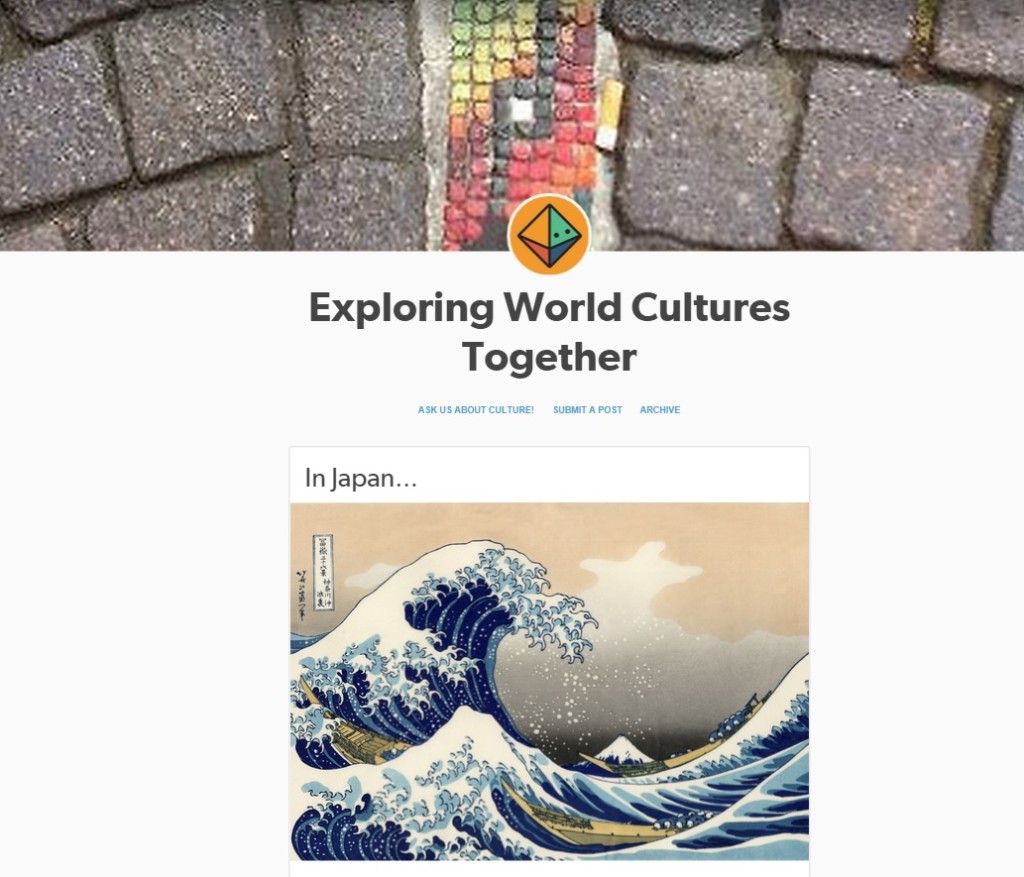 by Anna Loseva
by Anna Loseva
I remember in the methodology course at the university part of the material we were covering was the theory of how one (i.e. a teacher) can set up collaboration projects with learners from other countries, a pen pal kind of story. During seminars we would take notes on how students could write letters to one another and exchange postcards, asking and answering questions about holidays, food, famous sights, and other coursebook covered areas of “interest”. I was excited at the sound of it – what a thrilling experience for students it must be to actually use the language to communicate with others in English! I almost envied the learners of those days for having an opportunity to enjoy classes that I had never had myself. And then, remembering that I was supposed to be the teacher offering that opportunity… I could not fathom how exactly and where I would find those exchange partners.
That was year 2006. Five years later, through Twitter and Facebook, I found myself in a community of English language teachers worldwide, and now, in 2016, a project connecting classrooms from different parts of the globe sounds like a relatively simple thing to set up on my own…. Or does it?
I will never forget the first ever online exchange that I took part in. A teacher from France and I decided to connect our students, university science majors from France and Russia, by way of a wiki. To cut this not-so-long story short, the interaction never went further than mutual introductions. For my part, there was no way time-wise to do it in class, neither did we have an access to computers, so I could not follow through with even the first basic task. The initial enthusiasm subsided pretty quickly, possibly aided by the fact that the wiki activity was not obligatory for getting a grade for the course, for my students at least. There was no task following the introductions, then the course was soon over for me and my students, and thus the collaboration naturally faded.
What I could learn from that experience was that it should be clear for the teachers what the purpose of collaboration is, what the tasks are, the structure, and possibly even deadlines. Enthusiasm and energy of two teachers were obviously nowhere near enough to sustain a project involving twenty busy university students. In the years following that first lumpy pancake of an experience, I still wanted to open my classrooms to the online world of real communication in English, but I was cautious about starting a whole big project as I didn’t have confidence in myself. Instead, with various groups of students at various times, we created blogs and opened up their entries to the public for comments, we asked questions to Americans and to the British on the Lino boards and then devoured the many answers we got from teachers all over the world. Those activities spiced up the routine and opened space for interesting conversations in class.

One of the courses I have been teaching in my new job in a high school in Japan is a culture course, part of which for the past four months has been a culture exchange project. I believe it was much better thought through than my first experience. The culture exchange is run through a Tumblr blog used to showcase students’ work, a Google Doc for the original discussion of the project idea by the teachers, and Facebook messages back and forth to keep each other up-to-date. Out of ten teachers who originally showed interest, five have committed and contributed with their students from South Korea, Russia, and Canada. We have done what now seems to be many things: students co-wrote blog entries about various facts from their cultures, their peers wrote questions based on these texts on Lino boards (you can see examples here and here). That was the only explicit way for students to engage in a conversation, as comments on the blog are disabled. My students also made presentations of unique Japanese activities and phenomena and some of them agreed to share their work on the blog for others to see.
With the school year almost over here in Japan, we are also nearing the end of this culture exchange, and so I follow my tradition of analyzing the work done. Reflecting on these few months, I came up with a list of questions teachers should probably ask themselves and have clear answers to before setting out on a big collaboration journey:
- What is the age and language level of participating students?
- How many classes a week do you have with these students? How many of those classes can you realistically devote to the project?
- How much of their time outside class will students be willing to devote to the project?
- What is the main goal and theme of the project?
- Who is joining you? Is everyone ready to commit to an equal level of participation?
- What is the contents and structure of your project?
- What level of interaction between students do you expect?
- Which online platforms are you planning to use? Are social networks like Facebook permitted for use in class by your school regulations?
- How long is the project going to last?
- Is the project going to be part of the course syllabus?
It is certainly clear by now that when it comes to connecting classrooms around the world, I am an enthusiastic newbie, with a limited experience behind my back but an earnest desire to give it a chance with my students. I feel driven by my initiative in the beginning stages of a project and then gradually I lose grip of it. Realizing that the questions posed above are insufficient, I consider this post a shout-out to those teachers who are more competent in the area of organizing international collaboration projects, to teachers who have gone through the first try-outs and can now share their stories of success (or failure?), offer their tips and guidelines. All these could serve a big helping hand for teachers like me, who need to steer the energy into the right direction with the specifics of preparation stages, further steps to take, and objective criteria of a project success, in addition to a student’s “I like it!” on a feedback form.

